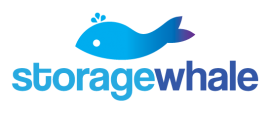While numerous businesses were already completely or largely reliant on cloud storage prior to it, the COVID-19 pandemic accelerated this process for any entities that weren’t in on the cloud just yet. As numerous employees across the country transitioned to working from home, companies needed robust cloud storage and data access solutions that would allow the business to stay connected despite largely remote work.
At Storage Whale, we’re happy to help with a huge variety of corporate data backups and cloud storage services, ensuring your business’s vital data stays not only protected, but also easily accessible when you need it. We helped many clients transition through the COVID-19 situation, including some who have retained many remote employees more than a year later.
One issue that’s become slightly more common in this time, for understandable reasons in some cases, is known as cloud overload, or overloading. Overloading is not good for your cloud storage, but it might not mean exactly what you think it does either. Here’s a primer on what cloud overload is, plus how you can put plans in place to avoid any such risks for your business.
Cloud Overload Basics and Issues
Some might think that “cloud overload” refers to having too much data within a given cloud setup, but that’s not actually what we’re talking about here. Rather, cloud overload speaks to a situation where a company or entity has too many cloud apps in use at once – over the past year, this has happened to some businesses in their rush to move to the cloud, which some have done without much of a coherent plan.
When this happens, here are some of the negative results that might take place:
- You are paying for multiple monthly cloud subscriptions for your business, including some that are not actually needed and are simply costing you money.
- Different cloud apps are often able to do the same things – you might end up in a situation where they’re duplicating each other’s processes.
- In other cases, cloud apps will not work well together, and this may result in the loss of data in some situations.
- Data is spread across too many apps, making it impossible for managers or those in the IT department to manage it comprehensively.
- Employees are using apps that the company doesn’t even know about, often because they were not given the proper directions on how to utilize approved cloud apps.
Due to the above risks and several related ones, cloud overload can be a costly issue. It diminishes productivity and efficiency in multiple areas, plus simply lessens the benefits you receive from cloud storage – benefits you’ll still be paying full price for.
Luckily, there are some basic steps you can take to simplify your company’s cloud use and get everyone on the same page. Here are some of the steps to take, including areas our team will be happy to assist you with.
Identifying Cloud Storage
First and foremost, you have to take stock of the current cloud apps that are being used within your business. Getting a firm handle on where your data is being stored will allow you to take the appropriate steps to organize and consolidate it.
This begins with a basic survey of employees, one that can usually be carried out easily by the IT department. Employees should be asked for a full list of cloud storage apps they’re using, including any they’ve gone outside the company’s recommendations for. Once you know this information, you can move forward to the next steps.
Integrated, Detailed Strategy
For many businesses, the issue here traces back to going with popular cloud storage options rather than those that will work best for the business as a whole. For instance, some companies will use Zoom for video, Slack for messaging, Dropbox for file sharing, RingCentral for VoIP…the list is extensive. These programs are all fine on their own, sure, but they are made by different vendors and may not allow for seamless integration across them. There are also more logins to track and more security settings to deal with.
On the flip side, you might consider a more streamlined strategy, such as those we offer at Storage Whale. Apps can integrate and share data natively, allowing for simple automation and much more efficient processes than you had before. The goal is a similar or even identical user experience for everyone utilizing the cloud, without having to use third-party apps that may be clunky.
Closing Out Unneeded Apps
Once you’ve landed on a streamlined strategy, it’s time to identify the cloud apps being used in your business that don’t fit this approach and close them out. Here are the basic tasks that need to be done for any of these apps:
- Migrate any relevant data from the old app into the new one.
- Make note of old app features that were preferred by employees, then check into whether they’re possible on the new app.
- Close the user account(s) associated with the old app, plus ensure you will not be billed for them.
Cloud Application Use Policy
Finally, once your cloud setup is streamlined and organized, it’s important to avoid future cloud overload risks by instigating proper policies to regulate cloud use. Any apps that are not approved by your business should be banned across the company, ensuring you won’t deal with “shadow” cloud apps that don’t integrate. In addition, be sure to include methods for employees to give their thoughts on the cloud setup, including how it can be tweaked and improved.
For more on avoiding cloud overload within a business setting, or to learn about any of our data backups or cloud storage services, speak to the staff at Storage Whale today.


